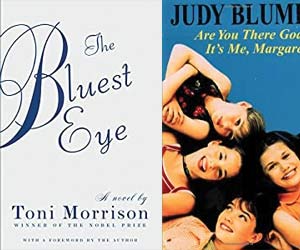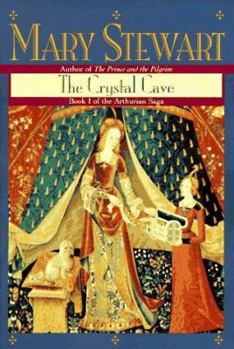The Crystal Cave
(Part of the Arthurian Saga (#1) Series and Merlin (#1) Series)
Select Format
Select Condition 
Book Overview
Born the bastard son of a Welsh princess, Myridden Emrys -- or as he would later be known, Merlin -- leads a perilous childhood, haunted by portents and visions. But destiny has great plans for this... This description may be from another edition of this product.
Format:Paperback
Language:English
ISBN:0449911616
ISBN13:9780449911617
Release Date:September 1996
Publisher:Ballantine Books
Length:544 Pages
Weight:1.12 lbs.
Dimensions:1.2" x 5.5" x 8.3"
Customer Reviews
6 ratings
A Must have for the Arthurian Library
Published by Thriftbooks.com User , 7 years ago
I first read this book in the 70s and fell in love with Mary Stewart. Subtle,occult, by far the best tale of Merlins role in the days,leading up to,Camelot
So well done, so far from today's background knowledge
Published by Thriftbooks.com User , 18 years ago
What I liked in particular in Mary Stewart's "The Crystal Cave" is that she keeps the dialog sufficiently neutral that we can forget the implied translation from the "original" Anglo-Saxon or Celtic tongues. So often in historical novels people use idioms that are absolutely of the modern day, and it has an instantly jarring effect. One thing that stands out from some of the reviews is how our general literary background knowledge, not to mention our attention span, may have diminished in the thirty-odd years since she wrote (unless things were the same back then?) More than one review talks of Merlin's boyhood exploration of the hypocaust as exploring "tunnels" under a "castle" or "fortress," even though Stewart takes pains to describe it as a large "country house." They have never heard of the typical graceful Roman villa with its underfloor hot-air central heating channeled from a wood furnace - via the hypocaust that Merlin crawls through - and its beautiful mosaic floors. When the King says to Camlach "We've never had the furnace on since you left" that's one of the many indications of what happened to the highly civilized Roman ways when the central empire fell, and in the outer provinces the "barbarians" like Merlin's folk took over. They could have had a comfortable house all winter, but instead they built open fires in the middle of the mosaic floors, griming the Roman pillars with soot and cracking the mosaics, as Stewart so clearly describes. The bathhouse was out of use - Camlach's wish to have a bath after his travels was "your damned Roman fashion" and water was heated over the courtyard fires instead of in the Roman central boiler-room. These were basically rough people camping out in the remains of an advanced civilization. But they were at the beginning of the long social progression that led us to the Middle Ages, the Renaissance, and then our own industrial and post-industrial ages..."The old order changeth, and giveth place to new." Some found the book "very long"...you will need "patience"...I don't think Dickens could have made a living here today. But I'm glad so many found it delightful, as I did.
Enchanted, once more
Published by Thriftbooks.com User , 19 years ago
A long time ago, I read Mary Stewart's Merlin Trilogy, which consists of three books: The Crystal Cave, The Hollow Hills, and The Last Enchantment. I had last read the trilogy back in the mid-1980s, back when I was in high school. So, recently I turned back to these old favorites, and found myself enjoying the tale once again. Here's a brief background of the story, without spoiling it too much for potential readers. England is suffering under fractured leadership following the departure of the Romans, some time before. England is broken up into several small kingdoms, with a High King to hold them all together, and to try to repell the Saxon threat already encamped on the shores. Into this time, Merlin is born, the bastard child of a local princess. The trilogy tells the tale of his life. In the first book, Merlin is first a small boy in Wales, where he finds his tutor in magic and the gods and medicine, and is touched by the prophecy which will shape his whole life's work. He flees Wales, for his own protection, and his subsequent actions inexorably lead to the conception of a child: Arthur, the future High King. In the second book, Merlin is charged by both the High King, Uthur, and his god to keep Arthur in his care, and to train him for his coming challenges. The story closes with Arthur assuming the mantle of leadership, following the passing of Uthur. In the third book, Arthur and Merlin work to end the Saxon threat, found Camelot, and close with Merlin's final destiny, as he had long since foreseen...almost. The tale is told in the first person: Merlin. In this fashion, the story feels personal in a way that few other Arthurian fantasies ever have. Merlin, the character, is a sympathetic one: he has good in his heart, he looks after his mission in life with care and humility, and he certainly doesn't buy into this "Merlin the Enchanter" crap circulating about England...though he's not above using it to his benefit from time to time. The other characters in the story are also fleshed out with care...and the characters are certainly not one-dimensional or static. The storyline is clearly grounded in historical "facts", as much as possible. Clearly Mary Stewart put some time into research, before beginning the writing of this tale. The writing style is very descriptive. In some novels, the description is somewhat threadbare, willing the reader to fill in the look of the setting to some extent with their own imagination. It's a perfectly valid writing style, and I've enjoyed many books written with that style. Here, however, Mary Stewart has sought to ground us, again, in a historical setting, and she puts a lot of attention into describing the setting so as to help with that grounding process. It's very effective. So, with the close of the tale, I feel somewhat saddened. Merlin became like a friend. So, I encourage other readers to pick up the challenge, and read the Merlin Trilogy, so you can be touched in this way also.
Great Book!
Published by Thriftbooks.com User , 23 years ago
I was required to read this book for summer reading for my highschool freshman honors english class. I started it a couple of days ago, and finished it last night. This is truly a great book. It's a unique take on a classic and well-known story. I'd always associated the name Merlin with an old man witha long white beard and robes with pointy hats. I'd never thought of Merlin as a young man. I also learned a lot about the legend of Camelot from the information in the back of the book .This book may have some faults, but I'm not a historian or camelot buff, and I'm also no author or literary expert. But as a 14 year old girl who loves to read, I am giving this book 5 stars and two thumbs up. The Crystal Cave is a must read!
The Crystal Cave by Mary Stewart
Published by Thriftbooks.com User , 24 years ago
The book The Crystal Cave by Mary Stewart tells of the life of Merlin the Enchanter from when he was six to about 24. His adventures are vividly described, whether its roaming the tunnels under his grandfathers castle or sneaking his uncle into the fortress of Cornwall. There is almost never a dull moment in this book. It takes awhile getting started, but it gets interesting around page 50, so hang in there. One part of the book I really enjoyed was when 13 year old Merlin takes a ride in the forest with his servant and catches his tutor up to no good. Overall, I'd say this book is excellent literature because it really describes everything. You can picture every scene and character in your head. I really felt like I knew each character and was genuinely upset when one died and outraged when one betrayed another. The book also teaches you a lot about the Middle Ages. There were castles, knights, maidens in distress, and all the usual stuff, but it also told about normal people. It tells of everyday life in medieval times. If you like this book, I recommend you read the 2nd and 3rd books in the Merlin Trilogy, The Hollow Hills, and The Last Enchantment. Both are just as good as The Crystal Cave. If you are fascinated with the legend of Arthur and Merlin, and are a patient reader who likes long, detailed novels like I do, you will adore this book!
The definitive Merlin...
Published by Thriftbooks.com User , 25 years ago
...at least, according to me. Having an interest in Arthurian mythology, I have read various retellings of the story from Marion Zimmer Bradley's "The Mists of Avalon" to Parke Godwin's "Firelord," and I can say without hesitation that Mary Stewart's "The Crystal Cave" is my favorite presentation of Merlin, period. In part this is because I read it when I was young, and so it was one of my first exposures to the characters, but I think that my deep-seated love for this book goes beyond mere familiarity. It is, plain and simple, a fantastic book. The narrator is Myrddin Emrys, later known as Merlin Ambrosius, the enchanter of legend-and here a fully realized human being, with questions, flaws, magnificences, and all the rest in between, sympathetic and capable both of evoking familiarity and mystery. (Yes, I love the character, want to make something of it?) While he is certainly the central character around which events revolve, Mary Stewart does not neglect any others, giving even the most minor players a full wealth of description and believable character. Skillfully handled by Stewart is the question of "magic," which is here the direct communication between Myrddin and his god, whatever god that might be. The visionary scenes read like pure poetry, never once resorting to any stock-fantasy cop-outs in their resolution; the concept of the crystal cave itself is enchanting. By the midpoint of the book Myrddin has become known as a prophet, but when he was young this gift was called "the Sight," and taken as a sign of his demonic parentage; for his mother named no man as her child's father, giving rise to the rumor that he was sired by the Prince of Darkness himself. This, of course, leads to his famous summoning to Vortigern, and the tower that will not hold fast but splits and falls every night...Here, as throughout the entire story, Stewart holds fast to the main details of the legend, fleshing out and elaborating upon the bare actions of the narrative. Even the names have an earthier sound to them, more historical and less stylized, while remaining recognizable to the reader. While "The Crystal Cave" may not be the most historically accurate of them all-there is one wonderful twist of plot and story, around which the center of the book and much of Myrddin's life hinges, which has absolutely no base in fact or legend-it evokes the times so richly that it might as well have been real. Mary Stewart's characters are people, not constructs; they interact realistically against the backdrop shadowed by Myrddin's mysterious god and the Sight that guides and drives his life. One can believe solidly that this Merlin existed. And, after all, is not that the point of both magic and good writing?
The Crystal Cave Mentions in Our Blog

Happy Birthday, Dear Books! Notable Books Turning 50 This Year
Published by Ashly Moore Sheldon • June 03, 2020
Mysteries, sci-fi, history, kidlit, YA, and more! Happy 50th birthday to these great titles! Whether perfect representations of their era or timeless works of art, these twelve books still resonate.






